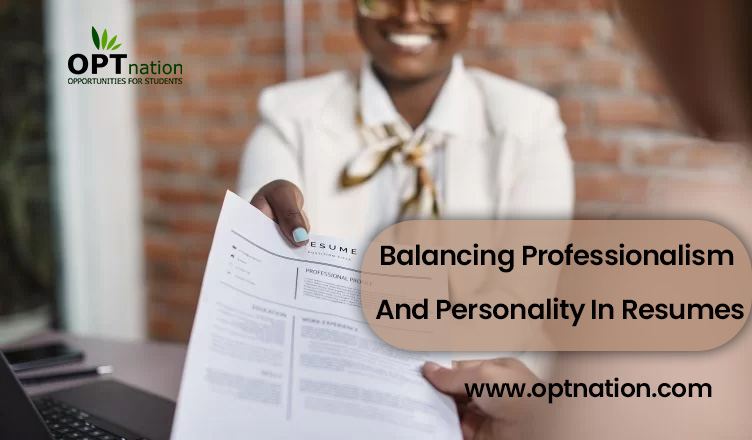In the competitive world of job hunting, your resume serves as your first impression. Crafting it is a balancing act, one that requires a blend of professionalism and personality. A resume that’s too professional may come off as sterile and unmemorable, while one that’s too personal can seem unprofessional. The stakes are high; a well-crafted resume can be your ticket to landing that dream job.
In this article, we aim to offer actionable insights that will guide you in creating a resume that successfully marries professionalism with personality, ensuring that you stand out for all the right reasons.
The Traditional Resume
A traditional resume typically prioritizes professionalism above all else. It follows a formal structure, often using a straightforward template. The emphasis is placed squarely on qualifications, previous job experience, and skills relevant to the position at hand. Fonts like Times New Roman and a monochrome color scheme usually dominate this style of resume, leaving little room for creative expression.
In this format, qualifications are often listed at the top, followed by a chronological or functional listing of job experiences. Skills, both technical and soft, are highlighted, usually through a dedicated section or interwoven with the job experience details. The aim is to present yourself as a qualified, experienced candidate who fits the job description to a tee.

- Universally Accepted: This format is widely accepted across industries and levels, making it a safe choice.
- Easy To Scan: Hiring managers can easily find the information they are looking for, given the straightforward layout.
- Focuses On Merit: Puts your qualifications and experiences front and center, allowing for a merit-based evaluation.
- Cons Of A Highly Professional Resume
- Lacks Individuality: This type of resume often ends up looking like many others, which might cause it to be overlooked.
- Limited Emotional Appeal: It may not fully capture your personality or distinguish you from other candidates with similar qualifications.
- Can Seem Impersonal: Without elements that show your personality, you may come across as just another applicant, rather than a complete individual.
A traditional, professional resume is a tried-and-true approach that prioritizes clarity and merit. However, it can also lack the unique elements that make you stand out as an individual. In the next section, we’ll explore how adding a personal touch can make a difference and how to do it without compromising professionalism.
The Modern Resume
In recent years, a growing trend towards infusing personality into resumes has emerged. This approach is not about abandoning professionalism; rather, it’s about enhancing it with unique traits that make you memorable as a candidate. Many are turning to a CV maker online to help achieve this balance between professionalism and individuality.
Several elements can showcase your personality. The first is design, which includes color schemes, fonts, and layout. A tasteful splash of color or a modern font can make your resume visually appealing. Another element is language. While maintaining a professional tone, you can opt for words or phrases that convey your individual approach.
Pros Of A Personality-Driven Resume
- Stand Out From The Crowd: Creative elements can make your resume memorable among a pile of traditional ones.
- Emotional Connection: A touch of personality can forge a connection with the hiring manager, making you more relatable.
- Showcases Soft Skills: Elements like volunteer work or hobbies can hint at soft skills like teamwork or leadership.
- Cons Of A Personality-Driven Resume
- Risk Of Overdoing: Too much creativity can overshadow your qualifications and make the resume hard to read.
- Industry Constraints: In some fields, a highly creative resume may not be appropriate and could work against you.
- Subjective Interpretation: Personal elements may be misunderstood, risking a negative impression.
A modern resume that integrates personality can make you stand out and create a more complete picture of you as a candidate. However, this approach comes with its own set of risks and considerations. The key is to balance personality and professionalism carefully, a subject we will delve into further in the upcoming sections.
Finding The Balance
Mastering the art of crafting a resume requires understanding both the job market and yourself. Achieving the perfect blend of professionalism and personality involves a few key considerations.
1. Assess The Company’s Culture
Before you start drafting your resume, research the company’s values, mission, and work environment. Company websites, social media profiles, and employee testimonials are good sources for this information. Once you have a sense of the company culture, tailor your resume to align with it.
For a creative firm, for instance, a dash of color or a unique layout may be welcomed. In contrast, a financial institution might prefer a traditional, black-and-white format.
2. Use A Professional Layout With Creative Elements
Always start with a clean, organized layout that prioritizes readability. However, feel free to integrate subtle design elements that reflect your personality. For example, instead of using the ubiquitous Times New Roman, you might opt for a modern, yet still professional, font like Arial or Calibri.
Colors should be used sparingly; a subtle navy blue header could provide just enough distinction without compromising professionalism.
3. Language And Tone
Maintaining a professional tone doesn’t mean you can’t inject some of your unique voice into the resume. The key is moderation. Use active verbs to describe your achievements, such as ‘managed’ or ‘led,’ rather than passive or overly complex phrases.
While avoiding industry jargon is generally advised, some industry-specific terms may be necessary to establish your expertise.
4. Additional Sections To Showcase Personality
Personalized sections like ‘Hobbies,’ ‘Volunteer Work,’ or ‘Personal Projects’ can be valuable additions. They give you an opportunity to showcase skills and interests that might not fit into traditional categories.
For example, if you’re applying for a marketing role and you run a personal blog, mentioning it could indicate skills in content creation. However, ensure that these sections do not divert attention from your key qualifications; they should complement, not overshadow, your professional attributes.
By considering the specific requirements of the job and the culture of the company, you can tailor your resume to make a memorable yet appropriate impression.
Conclusion
Striking the right balance between professionalism and personality in your resume is more than just a stylistic choice; it’s a strategic move that can significantly impact your job search. A well-crafted resume serves as a nuanced tool for personal branding, allowing you to present yourself as a complete, multi-faceted candidate.
In a competitive landscape, crafting a balanced resume could very well be the edge you need to land that dream job. Take the insights and tips provided in this article to heart, as they offer a guided path to achieving this critical balance. Your next career opportunity may hinge on this delicate equilibrium, so invest the time and effort needed to get it right.

